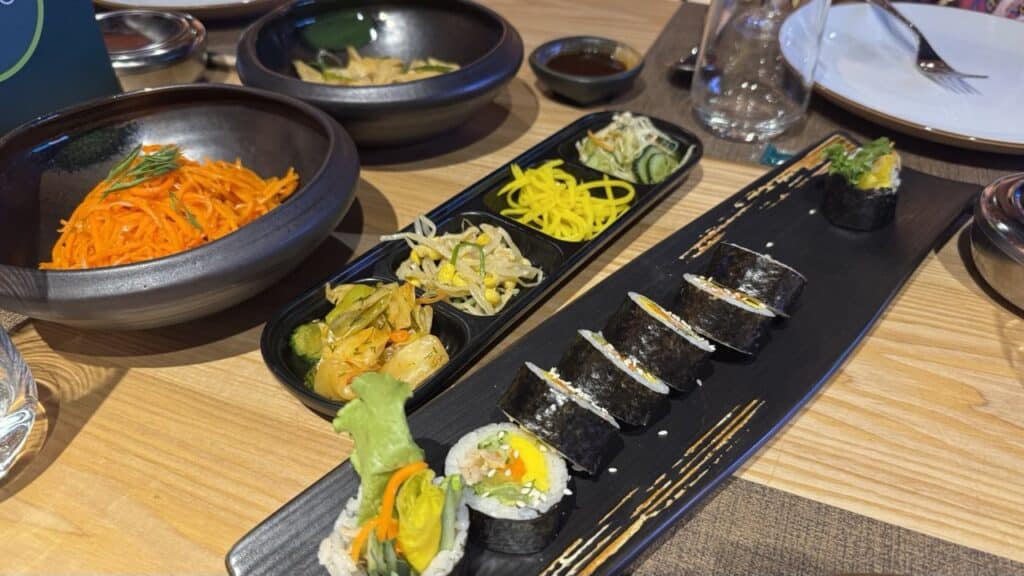
Korean culture, especially its distinctive cuisine, is gaining global popularity. But in Kazakhstan, what’s commonly labeled as «Korean food» often bears little resemblance to traditional South Korean fare. That’s because the cuisine has adapted over generations to local tastes and conditions. Kursiv LifeStyle took a closer look at the unique culinary identity of Koreans in Kazakhstan.
A culinary evolution rooted in history
Ilya Kim, director of the RIS restaurant chain, explained how the food of ethnic Koreans in Kazakhstan reflects their unique post-Soviet identity. Unlike North or South Koreans, local Koreans — descendants of those forcibly relocated to Central Asia in 1937 — have developed their way of life, shaped by historical hardship and the need to stay under the radar.

According to Kim, their cuisine is rooted in scarcity, using available ingredients to recreate flavors from memory.
«Someone once told me: ‘We have a tandem with Kazakhs — they provide the meat, we handle the flora: vegetables, fruits and salads.’ Thanks to this, we became friends. Today, we import many sauces from Korea, but our local, unique dishes — known only to Kazakhs — are still here,» Kim said.
Morkovcha: A Soviet-Korean creation
One of the best-known examples is morkovcha — a shredded carrot salad flavored with oil, vinegar, garlic and spices. Despite being widely viewed as a Korean dish in Kazakhstan, it’s virtually unknown in Korea. That’s because it was invented locally by Soviet Koreans after their relocation.
«Many people now celebrate Kazakhstan’s ethnic cuisines, and it’s important to understand that when they mention Kazakh cuisine, morkovcha is part of it. It was created by local Koreans – it’s part of our history,» Kim emphasized.
Kimchi vs. chimchi
The best-known Korean dish globally is kimchi, a spicy, fermented dish made with napa cabbage. But in Kazakhstan and other post-Soviet countries, it took the form of chimchi — a localized version made from white cabbage and local chili pepper, due to the unavailability of traditional ingredients.
«Young people today know about tteokbokki, kimchi and kimbap, but back then, we only had chimchi. It’s usually much spicier than classic kimchi because we made it with what we had,» Kim said.

Kimbap vs. sushi rolls
Kimbap — often mistaken for sushi — is a simpler, uniquely Korean dish. While Japanese rolls evolved to be complex and refined, kimbap remains humble and accessible.
«Kimbap is much simpler. It doesn’t use vinegar or rice wine. Just boiled rice with sesame oil and kim — fried seaweed, unlike the dried nori used in Japanese rolls. You’ll even find it sold whole at bazaars, like shawarma,» Kim noted.
Ramen or ramyeon?
Another point of confusion is between Japanese ramen and Korean ramyeon. Though both are noodle soups, they differ significantly in flavor, preparation and cultural role.
«For Kazakhs, it’s easy to explain like this: Japanese ramen is like sorpa (broth) with noodles — slow-cooked and hearty. Ramyeon is a spicy, instant-style soup often eaten as a hangover cure. Even rich people would come to my upscale restaurant and order regular ramyeon. Once you’re used to the spice, it’s hard to live without it,» Kim explained.
Why «asparagus» isn’t asparagus
In Kazakhstan, what’s known as «asparagus» in Korean markets isn’t the green stalked vegetable Americans are used to. It’s a soy-based product, tofu skin, formed from the film that appears on boiled soy milk.
«When soy milk is boiled, a thick foam forms on top — like kaimak (clotted cream) on cow’s milk. It’s removed, dried and cooked. It’s pure soy protein, plant-based and free of additives. No one knows exactly why it’s called ‘asparagus’ — we just didn’t have another word for it,» Kim said.

